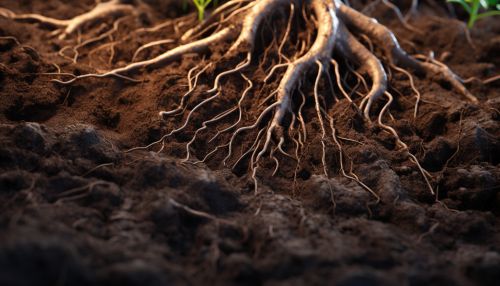The Science of Plant Root Exudation and Rhizosphere Interactions
Introduction
Plant root exudation is a process in which roots of plants release organic and inorganic compounds into the surrounding soil, a region known as the rhizosphere. This process plays a crucial role in plant nutrition, soil fertility, and the interactions between plants and other organisms in the soil ecosystem.


Plant Root Exudation
Definition and Process
Plant root exudation refers to the active or passive release of substances from the root system of plants into the soil environment. These substances, collectively known as exudates, include a diverse range of organic compounds such as sugars, amino acids, and organic acids, as well as inorganic ions and gases. The process of exudation is driven by both the metabolic activity of the root cells and the physicochemical properties of the exudates and the soil environment.
Functions and Significance
Root exudates play several important roles in the rhizosphere. They serve as a primary source of carbon and energy for soil microorganisms, thereby shaping the structure and activity of the microbial community in the rhizosphere. They also contribute to the solubilization and mobilization of nutrients in the soil, enhancing the availability of these nutrients for plant uptake. Moreover, root exudates can influence the physical properties of the soil, promote plant growth and development, and mediate plant interactions with beneficial and harmful soil organisms.
Rhizosphere Interactions
Plant-Microbe Interactions
The rhizosphere is a hotbed of interactions between plants and soil microorganisms, including bacteria, fungi, and archaea. These interactions can be mutualistic, commensal, or antagonistic, depending on the nature of the exudates and the ecological traits of the microorganisms. For instance, some bacteria and fungi form symbiotic relationships with plants, aiding in nutrient acquisition and disease resistance in exchange for carbon from root exudates.
Plant-Plant Interactions
Root exudates can also mediate interactions between different plants in the rhizosphere. These interactions can be either positive (facilitation) or negative (competition or allelopathy). Positive interactions occur when the exudates of one plant enhance the growth or survival of another plant, while negative interactions occur when the exudates of one plant inhibit the growth or survival of another plant.
Research and Applications
The study of plant root exudation and rhizosphere interactions has important implications for agriculture, environmental science, and ecology. Understanding these processes can help in the development of sustainable agricultural practices, the remediation of contaminated soils, and the conservation of biodiversity in natural ecosystems.


